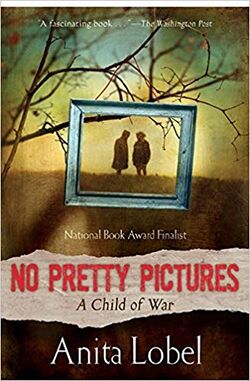Anita Kempler / Anita Lobel (F / Poland, 1934), Holocaust survivor
Anita Kempler / Anita Lobel (F / Poland, 1934), Holocaust survivor.
Bernard Kempler (M / Poland, 1936), Holocaust survivor
- KEYWORDS : <Krakow Ghetto> <Hidden Children> <Christian Orphanage> <Plaszow> <Auschwitz> <Ravensbruck> -- <Sweden> -- <United States>
- MEMOIRS : No Pretty Pictures (1998)
Biography
Anita Lobel was born in Krakow, Poland, to a merchant family. When she was five years old, World War II began and she, her brother and their nanny, whom they called Niania, were forced into hiding for the next four and a half years, first in the countryside, then in a ghetto, and finally in a convent, where the Nazis caught them. She and her brother were then sent to a concentration camp in Germany. They were rescued in 1945 by the Swedish Red Cross and reunited with their parents in 1947. Though she could read and write, Lobel did not begin school until age 13. In 1952, her family moved from Sweden to New York City where she graduated from Washington Irving High School and earned a B.F.A. in fine arts from Pratt Institute.
Book : No Pretty Pictures (1998)
- No Pretty Pictures: A Child of War (New York, NY: Greenwillow Books, 1998)
"The author, known as an illustrator of children's books, describes her experiences as a Polish Jew during World War II and for years in Sweden afterwards ... Anita Lobel was barely five years old when World War II began and the Nazis burst into her home in Kraków, Poland. Her life changed forever. She spent her childhood in hiding with her brother and their nanny, moving from countryside to ghetto to convent—where the Nazis finally caught up with them ... Since coming to the United States as a teenager, Anita has spent her life making pictures. She has never gone back. She has never looked back. Until now."--Publisher description.
Every Face Has a Name
Born in Krakow, Poland on June 2, 1934.
In 1942, Anita and her two year younger brother Bernard, escaped from the ghetto and were hidden by their governess, Rozalia. The Kempler children managed to return to their home in the ghetto and were hidden for a while in a cloister, until they were discovered and sent to Plaszow concentration camp. Fortunately, their mother’s oldest brother, Sigmund Greenberg, was an architect and engineer, and was very much needed by the Nazis. He risked his life insisting that if the children were not allowed to live he would never work for them again.
Anita and Bernard were later deported to Auschwitz-Birkenau for a brief time, but in the face of the impending invasion by Russian forces, the children were sent to Ravensbrück, a concentration camp that held women only. In 1945, Anita and Bernard were liberated and sent to Sweden by the Red Cross. They arrived in Malmö on April 28, 1945. Eventually, through the Red Cross, the children were reunited with their parents. Their mother had survived the war in Krakow and their father had escaped to Uzbekistan.
The Kempler family emigrated to Brooklyn, New York, in 1952. Later on Anita became a well known illustrator of children’s books. She’s written a book about her war time experiences, No pretty pictures (2000). Anita still lives in New York.
